1. Atrani
Atrani, with an area of just 0.120 square kilometers, is the smallest municipality in Italy by area. It is located on a promontory of the Amalfi Coast, and its origins are unknown: the earliest historical records date back to the 10th century, when the church of San Salvatore de Birecto was founded in Atrani, which functioned as the palatine chapel of the dukes of Amalfi. A small and quiet coastal village, it is one of the most “photographed” on the coast: worth seeing in the center is the aforementioned San Salvatore de’ Birecto, which today presents itself in its 17th-century appearance, the adjoining church of the Immaculate Conception, the church of Santa Maria Maddalena with its unique majolica-tiled dome and bell tower that are symbols of the village, and the Ziro Tower that towers over the town. At Atrani is also home to the cave where, according to tradition, Masaniello took refuge after the revolt.
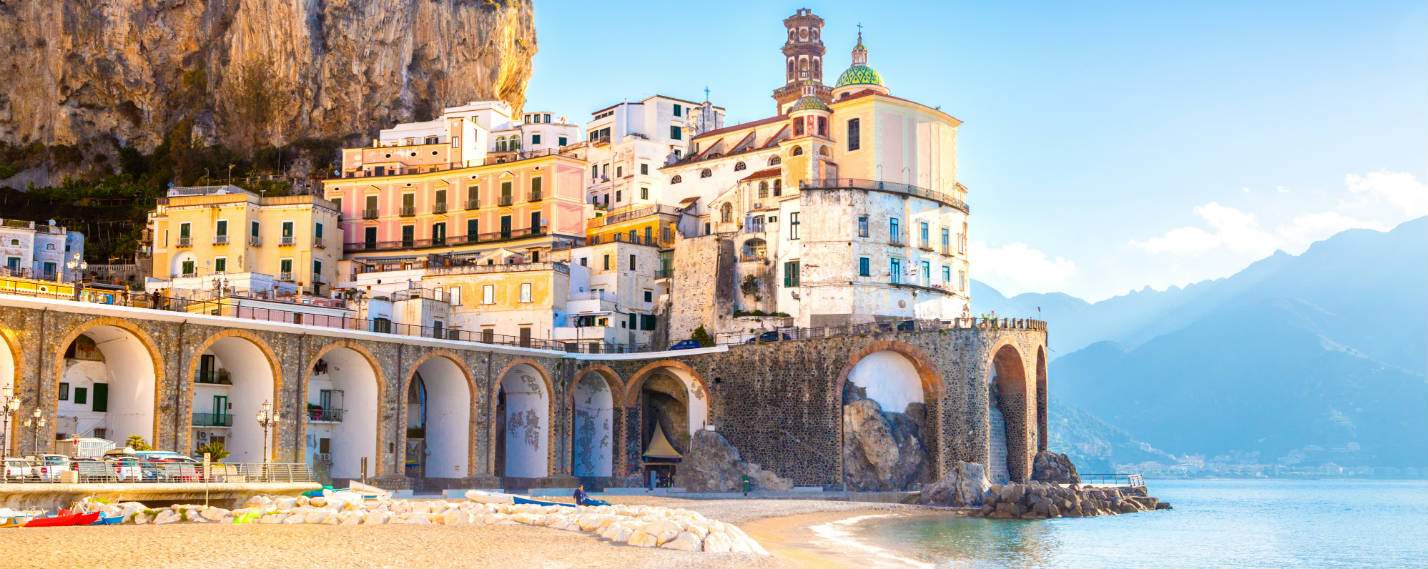 |
| View of Atrani |
2. Minori
Another village on the Amalfi Coast, Minori has Roman origins: in fact, the area was known as a resort of the Roman patriciate in the imperial age (it is the oldest settlement on the Amalfi Coast). Instead, the village developed during the Middle Ages, when it was part of the Duchy of Amalfi. Minori is also known as it was one of the towns affected in 1943 by the Salerno landings. Worth seeing in the town are the Basilica of Santa Trofimena, Minori’s main one, the church of the archconfraternity of the Blessed Sacrament, the ancient church of Santa Lucia, and the coastal towers built especially in the 16th century against raids by Saracen pirates. Minori’s Roman Villa, which can be visited, is the oldest evidence of life in the area.
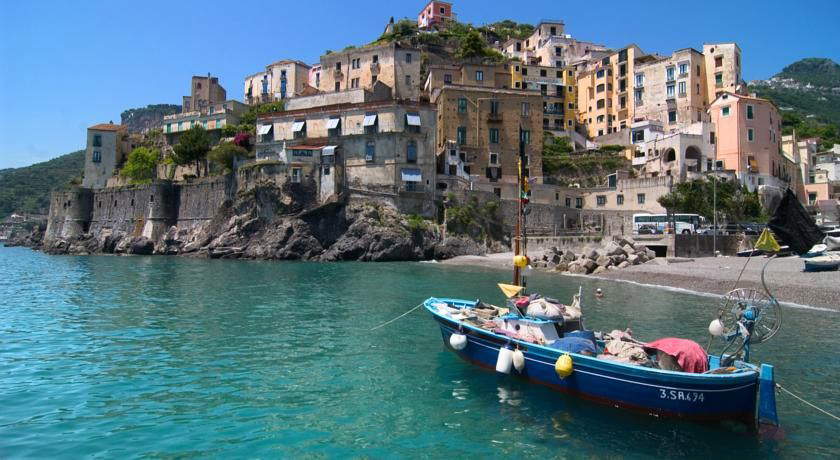 |
| View of Minori |
3. Nusco
A village surrounded by greenery, Nusco is also known as “the balcony of Irpinia,” given its splendid panoramic position, almost 1,000 meters above sea level. Nusco’s origins date back to the Middle Ages (the first document mentioning it is from 1093): it was a fief of the De’ Giamvilla family, and was the site of an important fortress, where William of Apulia and Manfred of Sicily took refuge in 1122 and in 1254. Although the urban fabric traces the medieval one, the appearance of the town today is largely eighteenth-century, that is, it dates back to the time of reconstruction after the two heavy earthquakes that, between the seventeenth and eighteenth centuries, devastated Irpinia and did not spare Nusco. Worth seeing today is the bizarre Co-cathedral where the stratifications of the various eras are evident, the ancient abbey of Santa Maria di Fontigliano (dating back to the 6th century AD but rebuilt over the centuries), and the great Castle of Nusco, in ancient times the town’s most important monument, now reduced to a ruin.
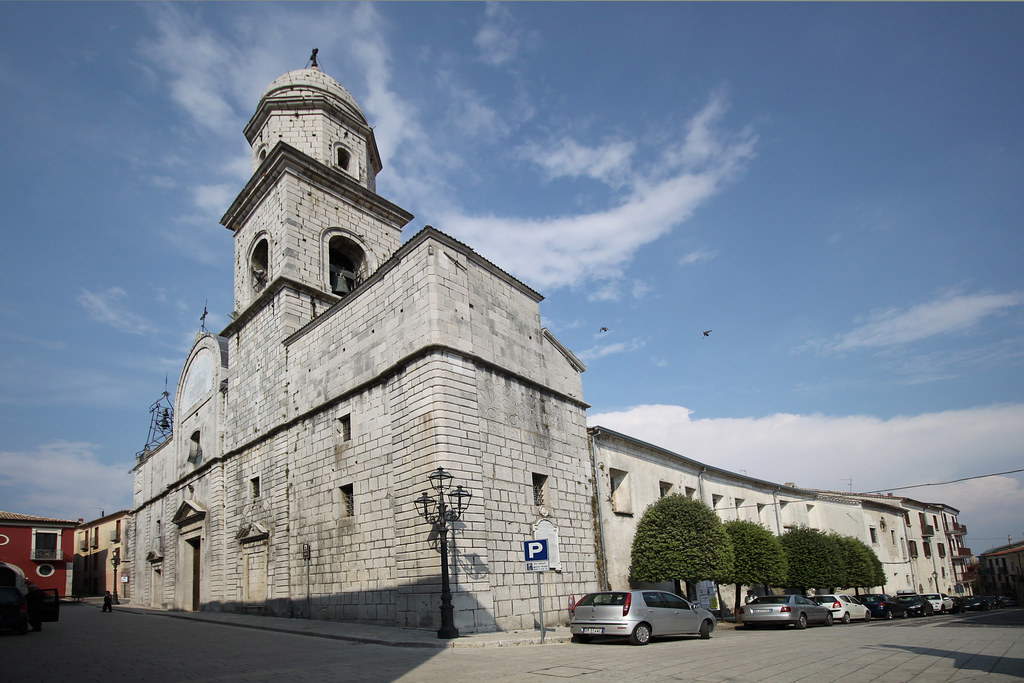 |
| The Co-cathedral of Nusco. Ph. Credit Amato Maiurano |
4. Sant’Agata de’ Goti
The town is divided into two parts: the modern part, of 19th-century origin, and the historic center, a village perched above a tuff relief. Sant’Agata de’ Goti’s origins are evident from its name, since it is an ancient Lombard center, but it was also dominated by the Normans and then the Swabians, until it came under the Angevins in the 13th century. On the tuff rock of Sant’Agata de’ Goti, however, there were probably already settlements of more ancient times, since Samnite necropolises have been found in the surroundings. Worth seeing in the town are the very ancient Cathedral of the Assumption, founded in 970, the Romanesque church of Sant’Angelo de Munculanis, the church of the Annunziata, which has 13th-century origins, numerous noble palaces, and the medieval Ducal Castle. The local Diocesan Museum (interesting fact: it was opened in 1996 by a then-cardinal Joseph Ratzinger) preserves archaeological finds, medieval works and anAnnunciation by Corrado Giaquinto.
 |
| View of Sant’Agata de’ Goti. Ph. Credit Kris De Curtis |
5. Castellabate
Castellabate is located on the Cilento coast, within the Cilento National Park. Its origins date back to the 12th century, when construction of the castle began on the initiative of the abbot (hence the name) Costabile Gentilcore. It was long a fief of the Swabians, then was Angevin and followed the fortunes of the kingdom of Naples. Today it is a popular site because of its amenity. In its historic center, with its medieval appearance, there are ancient testimonies such as the pontifical basilica of Santa Maria de Gulia, of Romanesque origins, the 19th-century sanctuary of Santa Maria a Mare, and numerous coastal towers. Castellabate is also a starting point for excursions along the beautiful Cilento coast.
 |
| Castellabate, the coastline of the hamlet of Santa Maria |
6. Furore
This small village overlooking the sea, of medieval origins, is known worldwide for its unique “fjord,” the “Fiordo di Furore,” actually a narrow inlet in the Amalfi Coast where the sea penetrates. In ancient times the area, which because of its ruggedness (it is made up of ravines overhanging the sea) gave refuge to fugitives and heretics, was known as the “Land of Furore” because of the fury of the sea waters penetrating the inlet. It was later a seaside village, and in the Middle Ages it was also a small independent municipality. Numerous churches remain in the center, including those of St. Michael the Archangel and St. James the Apostle, both founded in the Middle Ages, but the main attraction is the Fiord itself, where there is a busy beach in the summer months.
 |
| The so-called Fiordo di Furore |
7. Montesarchio
It is the second most populous municipality in the province of Benevento after the capital and is located in an area inhabited since the time of the Samnites (so much so that the foundation of the center is thought to date back to them). From the 13th century until the 19th century it was a fief of three families (the della Leonessa, the Carafa and the D’Avalos), which marked the history of the village. The two main monuments of Montesarchio sno the Tower, of medieval origin, now home to the National Archaeological Museum of Sannio Caudino, and the Castle (another home to the Archaeological Museum). Also dating back to ancient times are the Abbey of St. Nicholas (12th-13th century, but the appearance is later), and the Franciscan church of Santa Maria delle Grazie, of 15th-century origin. The village is divided into two parts: Latovetere, from the Lombard period, and Lato Nuovo, from the Norman period.
 |
| View of Montesarchio |
8. Casertavecchia
A hamlet of Caserta, from which it is about ten kilometers away, it is the ancient Caserta and looks like a perfectly preserved medieval village: today’s town developed with the arrival of the Bourbons, who built the Royal Palace here (but already under the Aragonese the ancient hamlet had already begun to depopulate). Today less than two hundred inhabitants live there: see the splendid Cathedral of St. Michael Archangel, which retains its medieval appearance, the ruins of the castle, and the alleys of the village.
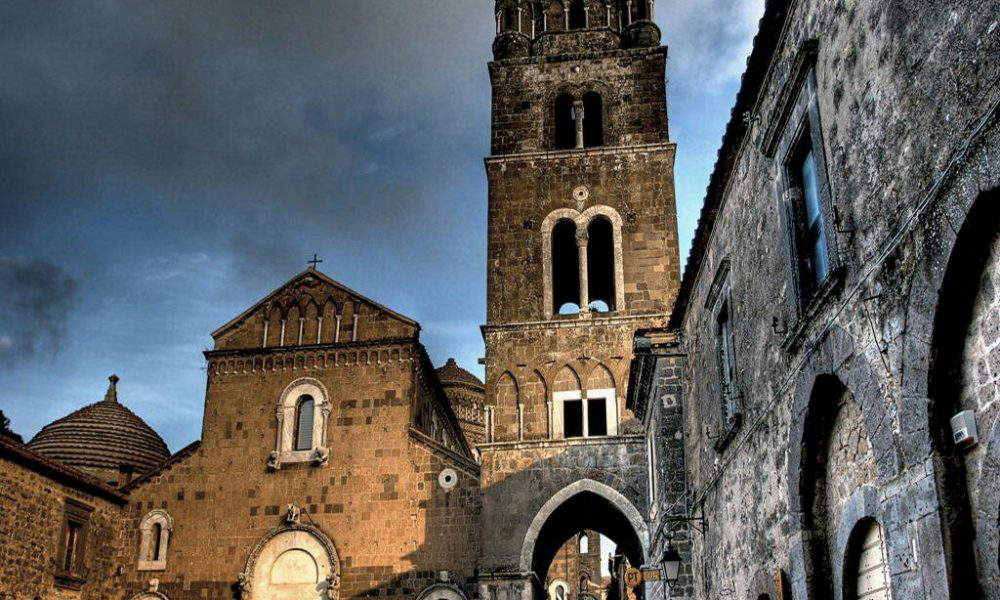 |
| The cathedral of Casertavecchia |
9. Zungoli
A village of just over a thousand inhabitants in the province of Avellino, Irpinia, it has very ancient origins as this area was at the center of a busy border area in Roman times, where the Appian Way and the Trajan Way passed. The well-preserved medieval village began to form around the year 1000, and there are many monuments from that period, starting with the Castle (most likely dating from the 11th century) and the 15th-century convent of San Francesco, which dates from the 15th century but was remodeled in later centuries.
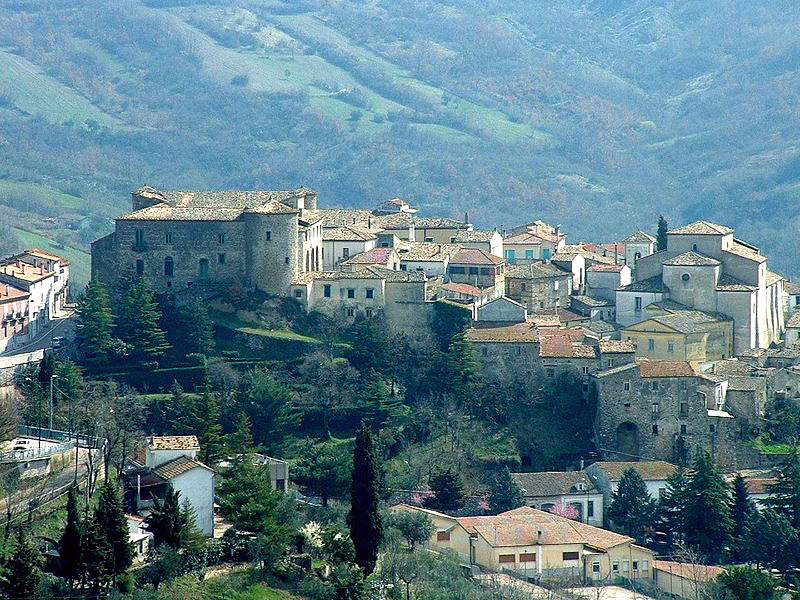 |
| View of Zungoli |
10. Ravello
Founded after the fall of the Roman Empire, this village on the Amalfi Coast was one of the most flourishing centers of the ancient Republic of Amalfi, which fell into decline following the end of the independence of the Amalfi state: under the Kingdom of Naples it was a fief of the Sanseverino family first and then of the Piccolomini of Siena, and over the centuries it continued to be enriched with works of art. The best-known monument is Ravello Cathedral, which houses the ambo by Nicola di Bartolomeo da Foggia, one of the masterpieces of medieval Italian art. Also worth seeing are the church of Santa Maria delle Grazie, the church of Santa Maria a Gradillo, and the church of San Giovanni del Toro. The famous Villa Rufolo Gardens offer splendid views of the Gulf of Salerno.
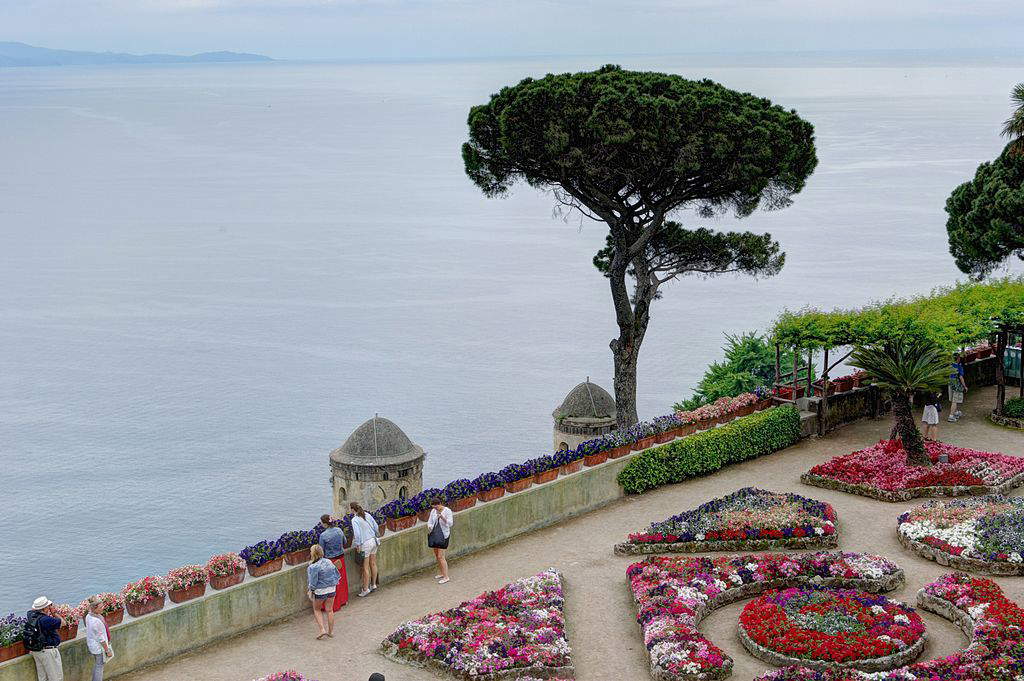 |
| Ravello, the gardens of Villa Rufolo. Ph. Credit Berthold Werner |
 |
| Ten villages to visit in Campania |
Warning: the translation into English of the original Italian article was created using automatic tools. We undertake to review all articles, but we do not guarantee the total absence of inaccuracies in the translation due to the program. You can find the original by clicking on the ITA button. If you find any mistake,please contact us.